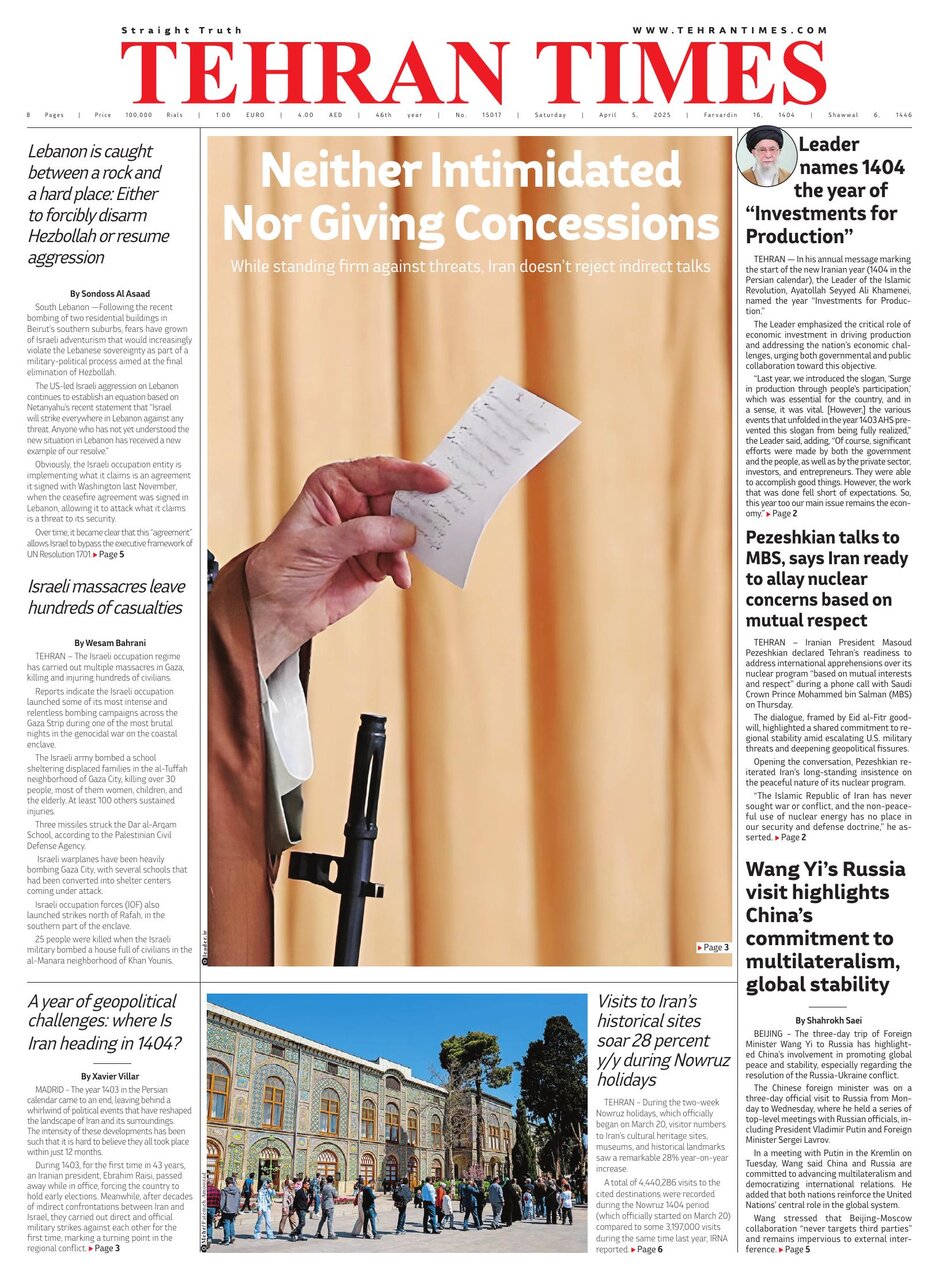
MADRID - The year 1403 in the Persian calendar pertained to an end, leaving behind a whirlwind of political events that have actually reshaped the landscape of Iran and its environments.
The strength of these advancements has been such that it is hard to believe they all happened within simply 12 months.During 1403, for the first time in 43 years, an Iranian president, Ebrahim Raisi, passed away while in office, requiring the nation to hold early elections.
On the other hand, after decades of indirect conflicts in between Iran and Israel, they performed direct and main military strikes against each other for the first time, marking a turning point in the local conflict.In this regard, the year 1403 saw Iran desert its standard doctrine of tactical patience in favor of a policy of active deterrence.
From a tactical perspective, this shift means that any attack on its military personnel or setups will be consulted with a direct response.The modification in strategic doctrine happened at the start of the year, following Israels missile attack on the building real estate Irans consulate in Damascus in April.
As a result of this attack, 7 members of Irans Islamic Revolution Guard (IRGC), including Mohammadreza Zadehi, were killed.Irans action to the attack came in the type of the operation known as True Promise, performed twelve days later.
Militarily, the operation included multiple drone and rocket strikes, preceded by a series of cyberattacks targeting the Zionist regimes power grid and radar systems, which resulted in prevalent power outages in the area.
The first wave involved lots of Shahed-136 kamikaze drones, with roughly 100 systems in overall.
This was followed by 3 additional strikes at intervals of around 30 minutes, launching in between 400 and 500 drones in total.In May, the helicopter carrying President Ebrahim Raisi, Foreign Minister Hossein Amir-Abdollahian, and other officials crashed in a mountainous location near the Azerbaijani border.
All passengers on board lost their lives.One of the essential doctrines directing President Raisis diplomacy was excellent neighborliness, aimed at strengthening ties with regional nations.
This teaching, which stays the foundation of Irans local policy, should be evaluated along with two other fundamental tactical pillars of his administrations diplomacy: unwavering support for Palestine and the Axis of Resistance, which was a main priority of his federal government, and the Look to the East policy, designed to consolidate political, economic, and tactical cooperation with countries in the Eastern Hemisphere, particularly in Asia, while lowering dependence on the West.In June, the preliminary of the early elections was held.
Masoud Pezeshkian emerged as the winner with 10.4 million votes (43.5% of the total), followed by Saeed Jalili with 9.4 million votes (37.7%).
Mohammad Qalibaf secured 3.4 million (14%), while Mohammad Pourmohammadi received 200,000 votes (0.8%).
Since none of the prospects protected the required majority (50% plus one vote), a second round was hung on July 5, in which Pezeshkian was chosen as Irans brand-new president after winning around 16.4 million votes.
Jalili, for his part, received around 13.5 million votes.Pezeshkians election was eclipsed by the assassination, on the very day of his inauguration, of Ismail Haniyeh, the head of Hamas political bureau, who had gone to as an invited visitor to the Iranian presidents swearing-in ceremony.The method of targeted assassinations has been utilized by Israel for decades.
The Mossad, Israels intelligence company, has a long history of operations versus Palestinian figures and other opponents of Israel in Europe, Syria, Lebanon, Egypt, and Iran.
If the supreme objective is to compromise groups opposing the colonization of Palestine, this method has stopped working: every assassinated leader has actually had a successor, as was the case with Haniyeh.In September, electronic gadgets utilized by Hezbollah in Lebanon were targeted in collaborated surges, causing many casualties, consisting of civilians, and injuring Irans ambassador to Lebanon.That very same month, Hezbollah Secretary-General Hassan Nasrallah was assassinated in an Israeli strike in Beirut, along with Abbas Nilforoushan, the deputy head of operations for IRGC.
Hezbollah had challenged Israels military supremacy by developing a no-go zone within Israeli-occupied area, forcing countless settlers to flee from the north of the country.In October, Iran launched True Promise II in retaliation.
According to the IRGCs statement, nearly 400 ballistic rockets were fired at essential military targets in Tel Aviv and other areas.
Iranian sources declared that over 80% of the missiles struck their targets which the Mossad headquarters was damaged in the attack.
The Negev Airbase, which housed F-35 fighter squadrons, was also hit.On October 26, Israel reacted with a series of airstrikes versus Iran.
Iranian military sources reported that many projectiles were obstructed, though limited damage took place in Tehran, Khuzestan, and Ilam.In November, the most considerable occasion for Iran was Donald Trumps victory in the U.S.
elections.
In spite of speculation about internal divisions within his administration, Trump renewed the maximum pressure policy against Iran just months later.In December, the collapse of Bashar al-Assads government in Syria became one of the most serious geopolitical dangers to Iran in decades.Finally, on February 7, the Leader of the Islamic Revolution, Ali Khamenei, dismissed any possibility of dialogue with the United States as long as the optimal pressure policy persisted.
Days before the years end, Trump threatened Iran following attacks on Yemen, warning that any rocket launch from Yemen would be considered an Iranian attack with serious effects.
The year 1404 is forming up to be a definitive period for Iran.
The obstacles include Israels intensifying military actions in the region, in addition to the U.S.
maximum pressure policy.
Opportunities likewise develop in the shift toward a multipolar world order, in which Iran could play a central role.

 15
15









